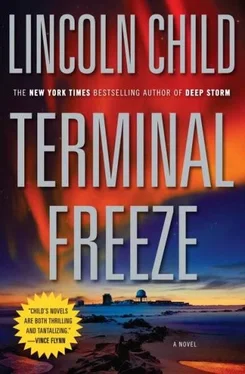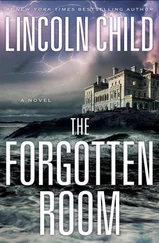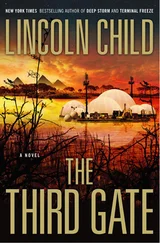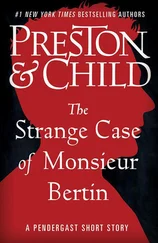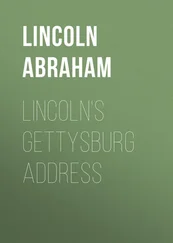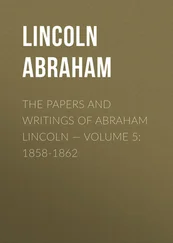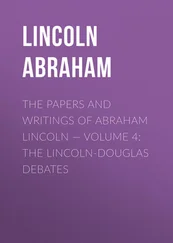Conti nodded again, absently, his eyes back on the glacier.
Marshall wondered if he should tell the producer about the nearby inhabitants. They were probably precisely the kind of “color” Conti was looking for. Just as quickly, he decided against it. The last thing the Tunits wanted-or deserved-was a loud, ignorant film crew descending on their village. He didn’t need to guess how they’d react if they could see how Mount Fear had been transformed over the last few days.
He glanced surreptitiously at Conti. Marshall was having a difficult time drawing a bead on the director. For all his posturing as a fey artiste, the man also exhibited a hard, uncompromising façade. It was a most unlikely combination, half Truman Capote, half David Lean. It kept one off-balance.
The ice cave lay ahead now, its dark maw obscured by the pieces of heavy equipment: a flatbed crane on balloon tires and another vehicle that Marshall could not identify. They were painted bright yellow, garish against the snowpack and the pale blue of the glacier. While the cameramen swapped out lenses and the sound engineer readied his belt mixer, the battalion of men in leather began spreading out around the machines. Two heaved themselves up into the cabs, while others began pulling the wooden pallets from the Sno-Cat and stowing their contents onto the rear of the mobile crane. Glancing more closely, Marshall saw that they were duffels loaded with heavy steel spacers, with hydraulics for adjusting their height.
Barbour watched the men work with narrowed eyes. She held a palmtop computer in one heavily gloved hand and a digital recorder in the other. Even more than Marshall, she was suspicious of the documentary crew. “I can guess what the bloody great flatbed is for,” she murmured. “But what’s the other thing?”
Marshall peered at the second vehicle. It bristled with equipment that looked vaguely medieval. “No idea.”
“Make a note,” Conti was saying to Ekberg. “I want a four-color palette: the white of the snow, the cerulean of the sky, the azure of the glacier, the black of the cave. It should be a nocturne in blue. We’ll need to use that special process when we get it to the lab.” He glanced at the cameramen. “Ready?”
“Ready,” said Fortnum, the director of photography.
“Ready here, Mr. C,” said Toussaint, the assistant DP.
“You’ll need to be very, very careful,” Marshall said. “The floor is glare ice, and very slippery. And like I said, these lava tubes are extremely brittle. This whole thing is a crazy risk. One false move and you’ll bring down the roof.”
“Thank you, Dr. Marshall.” Conti turned back to the cameramen. “Fortnum? Toussaint? If you hear any sharp cracking noises while we’re inside, quickly pan over the assembled faces. Pick the most frightened you find and zoom in.”
The cameramen glanced uneasily at each other, then nodded.
Conti took one final look around, then nodded to Toussaint. “Quiet on the set!” bellowed the cameraman. All chatter immediately faded.
Conti raised his eyes to the cave. “Action!”
A digital clapstick snapped and the cameras rolled. Simultaneously, the heavy equipment started up with ear-splitting roars. With a grinding of gears, they lurched toward the face of the glacier. Conti and his small knot of assistants swung in behind. The cameramen stood back, panning carefully, getting everything in. With a huge sense of reluctance, Marshall followed the procession toward the cave. He had a horrible sinking feeling that Conti’s hubris was going to make victims of them all.
At the cave mouth, the vehicles paused to let some of the roustabouts pull a few of the canvas duffels off the flatbed. Then, powerful searchlights snapped on atop the yellow cabs, clutches popped, and the equipment rolled forward again, more slowly now, disappearing under the low roof of the cave. Marshall and the rest followed single file. The chill dry air of the lava pipe grew heavy with diesel fumes. The walls vibrated madly, and the sound of the engines was deafening. Glancing over his shoulder, Marshall noticed that-under the direction of a burly crew foreman named Creel-the roustabouts were pulling the steel spacers from the duffels and snugging them into place between floor and ceiling. This temporary bracing made him feel only marginally better.
He made his way down the tunnel. There was no need for a flashlight: the searchlights on the cabs and the camera illumination turned the cave into a tube of brilliant blue. There was a deep scraping noise ahead as one of the vehicles forced its way beneath the lowlying ceiling. Marshall noticed even Sully’s resolutely bluff expression pale at this.
Then the cave widened, the ceiling rose, and the little company quickly formed a circle around the cleared spot in the ice floor. The diesels cut off, one after the other, and for a moment the silence seemed deafening. A faint staccato crackling echoed in the chamber as the ice floor settled under the weight of the big machines. The roustabouts finished buttressing the cave with the spacers, then hung back at the periphery.
For a moment, nobody spoke. Everyone looked down at the large dead eyes that stared back up at them from the ice. Marshall glanced at the assembled company, one by one. Ekberg, frowning, looking troubled. Barbour, making brisk notations on her palmtop. Conti, gazing into the cloudy ice, his complacency clearly shaken. Faraday, blinking through oversize spectacles as he pulled measuring equipment from his pockets. Sully, beaming with something like paternal pride.
Finally, Conti roused himself. “Fortnum, Toussaint, you getting this?”
“Affirmative,” said the DP.
“You’ve panned across the scientists?”
“Twice.”
“Very well.” The producer turned toward Sully. “Mark out the animal, please.”
Sully cleared his throat. “Mark out?”
“The block of ice we’ll be cutting from the cave floor. Be generous-we’d hate to slice off a drumstick by accident.”
Sully winced, but he stepped gamely forward and-after a few whispered consultations with Faraday-made some calculations, then scratched out a crude oblong in the ice with his penknife.
“Depth?” Creel asked.
Sully looked at Barbour, who consulted her palmtop. “Two point seven meters,” she said.
Creel turned to the man at the vehicle’s control console. “Make it two point eight.”
Once again, the cave filled with the roar of a diesel engine and dense clouds of exhaust. As the cameras rolled, another of the roustabouts used a handheld remote to guide a heavy mechanical arm on the strange-looking machine into position over the ice. Slowly, he lowered it onto Sully’s etching.
“Stand back,” Creel warned.
A beam of intense red light appeared at the tip of the instrument. Immediately, the ice beneath the beam began to spit and boil. “Military-grade laser,” Conti said. “Very powerful, yet more precise than a jeweler’s file.”
Everyone watched as the laser cut slowly along the outline in the murky brown ice. One of the roustabouts snapped on a portable compressor mounted on the side of the flatbed. Holding a snorkel attachment to the lengthening hole, he siphoned the meltwater through a heavy rubber tube and channeled it down into the recesses of the ice cave. Looking on, Marshall was reminded of some kind of monstrous dental work. While the scientist in him rebelled at the very idea of such an undertaking-cutting a unique specimen out of its matrix with such brusque abandon-he was nevertheless relieved at the evident care being taken.
Within twenty minutes it was done. The oblong Sully had scratched into the ice was now a deep channel, one inch wide along two of the sides and almost six inches wide on the others. There was a brief wait while Chen stepped forward and used the remote imaging sensor to confirm the cut was sufficiently deep. Then the laser was retracted and another bizarre-looking arm telescoped out from the machine. Something that to Marshall resembled a robotic hand, thin but quite wide, was attached to its end. It came alive with an insectlike whine.
Читать дальше
